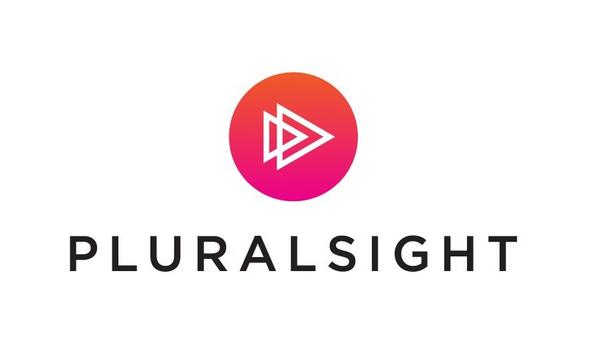Pluralsight - Experts & Thought Leaders
Latest Pluralsight news & announcements
Pluralsight, the technology workforce development company, today released its 2024 Technical Skills Report. This annual survey asked 1,400 executives and IT professionals how organisations can leverage technology to drive business value in a world where budgets and headcount are decreasing and technology is evolving at a rapid pace. The findings highlight the top areas for upskilling and learning opportunities, the biggest benefits of continuous learning, and the greatest impediments to adopting upskilling programmes. Need for foundational skills The results were unanimous across markets and career levels: cybersecurity, cloud, and software development, which are considered the most imperative tech skills to learn, are the top areas where skills gaps persist. Cybersecurity and cloud have been named the two largest skill gaps since 2021. This sends a clear message: before prioritising skills for tech trends, an organisation needs solid foundational skills in security, cloud, and software development. Notable findings Sixty-five percent of respondents said cybersecurity skills were lacking most within their organisations, followed by cloud (52%) and software development (40%). Cybersecurity skills were cited as the most important to learn in the next year (63%), followed by cloud (47%), and software development (45%). Despite the hype in the news feed, Pluralsight’s report found that AI/ML skills gaps are the lowest priority to address, but demand is growing. Compared to last year, 11% more technologists are interested in building AI/ML skills. Cybersecurity skills rank at the top “While we know AI/ML skills are increasingly critical, we’ve also found that organisations have other, more immediate upskilling priorities,” said Aaron Rosenmund, Pluralsight’s Senior Director of Security & GenAI Skills. “Considering that the average cost of a data breach is $4.45 million and that successful cyber-attacks are continuing to exponentially increase year-over-year, it becomes clear why cybersecurity skills are top of mind for organisations.” Hiring vs. upskilling Sixty-six percent of organisations say hiring takes longer or the same amount of time as upskilling When a skills gap is identified, organisations have two options: hire new talent or upskill current employees. Hiring is often regarded as a quick way to find top talent with the right skills but the findings say otherwise. Sixty-six percent of organisations say hiring takes longer or the same amount of time as upskilling existing talent. Upskilling’s benefits come to life in the numbers. The average cost of hiring new tech talent in the US is more than $23,000 and takes 10 weeks. According to respondents, more than half of organisations (57%) spend only $5,000 per employee on upskilling. Financial benefits of upskilling “This year’s report highlights the financial benefits of upskilling current workforces and how continuous learning boosts the confidence of employees and empowers them to thrive in their roles as the technology landscape continues to shift,” said Will Clive, Pluralsight’s Chief People Officer. “It’s clear that investing in tailored learning paths to assess and address specific knowledge gaps can lead to significant business outcomes.” A culture of learning Organisations struggle to implement successful upskilling programmes has not changed in the last three years The power of upskilling is undeniable but putting it into practice with employees is the real challenge. The top reason organisations struggle to implement successful upskilling programmes has not changed in the last three years of this study: lack of time. Despite clear barriers, organisations can unlock upskilling engagement with a culture of continuous learning. The first step is to identify existing skills to see the gaps. Pioneers need to stay engaged in this process: only 33% of executives completely understand the skills their IT teams need and 68% of technologists say leadership at their organisation is not aware of a tech skills gap. Performance and innovation When it comes to discovering what drives employees to upskill, a new #1 motivation to participate emerged this year: stronger job security and improved confidence. This is yet another proof point in upskilling contributing to higher employee engagement that can drive performance and innovation. With 78% of organisations abandoning projects partway through because of not having enough employees with the right tech skills, there is no time to waste in closing the gap.
Pluralsight, the technology workforce development company, announced the appointment of Somit Goyal as President and Chief Operating Officer (COO). Reporting to Pluralsight Co-Founder and CEO - Aaron Skonnard, Somit will be responsible for overseeing the development and execution of Pluralsight’s cohesive strategy across core product and go-to-market organisations in support of the company’s growth. Aaron's comments “Somit’s deep, proven expertise across business leadership, sales strategy and operations, and product management is the perfect match for Pluralsight in our next chapter of growth,” said Aaron Skonnard, Co-Founder and CEO of Pluralsight. Aaron Skonnard adds, “His passion for driving continuous success for all business stakeholders combined with his technology and SaaS background will help us meet the evolving needs of our customers as we continue to empower large enterprises around the world to advance their technology workforce. An exceptional leader and ultimate team player, I’m so excited to welcome Somit to Pluralsight.” Bridging the technology skills gap I look forward to bringing my expertise to help our customers close these skills gaps, drive innovation" Somit Goyal said, “The technology skills gap is a growing problem for businesses and government agencies around the globe. I look forward to bringing my expertise to help our customers close these skills gaps, drive innovation, and compete in a digital world." He adds, "I am thrilled with the opportunity to join Pluralsight and contribute to the company’s mission of advancing the world’s technology workforce.” Somit's experience and qualifications Somit brings more than 20 years of experience in enterprise and consumer software in various functions across sales, customer success, and business strategy to Pluralsight. Somit comes to Pluralsight after spending more than a decade at Microsoft in various leadership roles, most recently as General Manager of Modern Work. In that role, Somit led global sales for Microsoft’s productivity, collaboration, and employee experience product suites as well as the Surface family of devices. Prior to Microsoft, Somit held product development, product management, and strategy roles across companies like SAP, Oracle, and AOL. Somit holds an Electrical Engineering degree from the Indian Institute of Technology and an MBA in Marketing and Strategy from INSEAD.
Pluralsight, the technology workforce development company, has announced the launch of two new features for Pluralsight Flow, the software development intelligence platform helping engineering organisations accelerate growth through optimised software delivery. These features include Team Health Insights, which enables engineering leaders to proactively diagnose the holistic health of their teams, and the Sprint Movement report, designed to help with sprint planning and predictability efforts. New capabilities complement Pluralsight Flow Despite having many tools and processes at their disposal, engineering leaders often lack context into their data Together, these new capabilities complement Pluralsight Flow’s goal to help engineering organisations better understand their workflows, build thriving teams, drive strategic alignment, and deliver value to customers faster and reliably. Understanding team health and developer satisfaction, while ensuring fast, high-quality software delivery, continues to be a top strategic imperative for engineering organisations around the globe. Despite having many tools and processes at their disposal, engineering leaders often lack context into their data, making it difficult to understand how developers are really doing. Providing supplemental data on team workflows Pluralsight Flow’s Team Health Insights and Sprint Movement report solve this problem by providing leaders with supplemental data on team workflows, allowing them to ask and answer additional questions across the entire software delivery value chain. Greg Ceccarelli, General Manager at Pluralsight Flow, said “Engineering leaders and their teams are constantly trying to reconcile two competing demands: rapidly innovating while ensuring they deliver stable, reliable software. Pluralsight Flow is a key enabling partner for these leaders to help them sustainably optimise delivery lead times by focusing on process improvements that improve the developer experience.” Greg Ceccarelli adds, “By introducing Team Health Insights and the Sprint Movement report, Pluralsight Flow is delivering new insights that give engineering leaders the power to understand team constraints, identify how they can best address them, improve the developer experience, and ultimately, deliver more value to customers faster. Conversations and efforts can focus on where it matters most, helping teams make changes with real impact.” Team Health Insights With the addition of Team Health Insights, Pluralsight Flow is the only solution that gives a comprehensive, single pane of glass view into team health, empowering engineering leaders with the necessary metrics to diagnose, optimise, and lead their organisation’s processes sustainably. With Team Health Insights, customers can identify potential bottlenecks, before they cause significant problems. They have access to quantified measurement of holistic team health through metrics categorised into key areas that act as pillars of sustainability for an engineering team: culture, activity, and efficiency. Culture pillar and Activity pillar Activity pillar enables team members to view pace of work and accrued risk within their teams Culture pillar allows leaders to assess developer satisfaction and collaboration within their teams using metrics, such as time to first comment, submitter time to respond, amount of reviews on pull requests and types of comments. Activity pillar enables team members to view pace of work and accrued risk within their teams, in order to build a healthy work balance using code and collaboration velocity metrics. Efficiency pillar Efficiency pillar helps leaders understand flow of work through the system, identify disruptions and bottlenecks, and assess how much of their team’s time is spent in meetings using metrics, such as time to merge and queue time. “As someone who looks at data from multiple sources to understand my team’s health, I found the Team Health Insights report a great addition to the Pluralsight Flow tool,” said Pedro Silva, Engineering Operations Lead at OLX Group, adding “Not only does it display data from multiple key areas, but it also allows you to customise the data points you would like to see and focus on.” By analysing metrics from each of these pillars, Team Health Insights enables engineering leaders to benchmark themselves to understand where and how process changes will have the most impact. A better way to sprint In traditional sprint reports, leaders are able to see the final result of a sprint: whether the team failed or succeeded in meeting their commitments. However, most teams find it difficult to surface the reasons behind the success or failure of a sprint. Pluralsight Flow’s Sprint Movement report solves this problem by helping leaders see what was committed prior to a sprint, what was added during the sprint and the overall completion rate of committed versus added work. Sprint Movement report With the Sprint Movement report, customers can also see who is working on the additional requests With the Sprint Movement report, customers can also see who is working on the additional requests. This allows for better collaboration and planning for future sprints, as well as sprint trends across time. By reducing the time spent actively trying to figure out what was causing bottlenecks in sprint retrospectives, engineering leaders can focus their teams collaboratively on removing said bottlenecks. This transparency allows customers to better understand their processes while helping set realistic goals, manage appropriate workloads, and estimate project deadlines more confidently across the organisation, ultimately leading to healthier teams that produce accelerated customer impact. Open and flexible engagement with Allvue Systems Matt Jones, Head of Agile Delivery at Allvue Systems, said “I am absolutely delighted again and again by the impact made by Pluralsight Flow metrics, particularly the new Sprint Movement Report. Pluralsight’s uniquely open and flexible engagement with Allvue Systems puts us ahead of the competition in visualising our leading and lagging delivery indicators as they are recognised live.” Matt Jones adds, “The presentation and calculation of these delivery metrics provided encourages healthy practice and interaction within both our delivery teams, as well as across the organisation. These metrics alone reinforce and support the benefits of agile, but coupled with the visualisation techniques of Pluralsight Flow, these become a powerful tool for positive disruption and alignment within organisations and for business agility transformation.”
A modern guide to data loss prevention
Download7 proven solutions for law enforcement key control and asset management
DownloadThe truth behind 9 mobile access myths
DownloadAccess control system planning phase 2
DownloadSecurity practices for hotels
Download
































